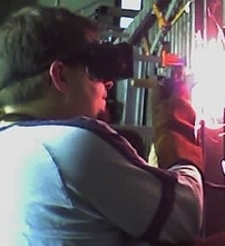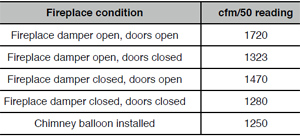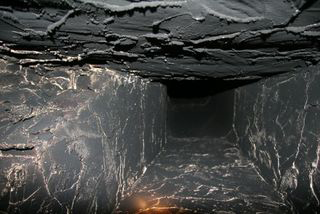
by blogediter | Dec 3, 2018 | Chimney Plugs
Plasma cutter
Q: Jason, How do I remove an old fireplace damper? I am putting in a stainless steel
chimney liner tube for protection and I need to remove the damper… – JB
A: JB, The lowest tech way would be to use a Sawzall. But, Using a Sawzall will be a certain mess on your head. All that vibration will certainly bring down an unwanted tidal wave of chimney buildup and metal chips. I don’t recommend that at all.
A plasma cutter will be a better option for tight quarters like a chimney. You make this liner insert project sound as though you are planning on doing it yourself? It is money well spent to have something like this done by a service provider that is experienced, especially if you don’t own your own plasma cutter.
After your damper is removed you may want to consider a Chimney Balloon or some type of chimney plug to serve as your damper. You don’t want that open hole to be left unclosed to release your AC in the summer and heat in the winter. – Jason

by blogediter | Apr 4, 2018 | Save Energy
Fireplace damper testing graph
Chimney Balloon USA had a certified energy rater test to see what sealed a home tighter… a metal damper, fireplace glass doors, or a Chimney Balloon.
Who: A third party Focus on Energy certified energy rater (Mark Furst with Grading Spaces Inc) did a blower door testing sequence on a ranch home of 1200 square ft. Mark is certified with Focus on Energy and also with Resnet.
What: The test home was a 1200 square foot ranch style home with a basement. It had one zero clearance fireplace with a 9″ flue and a flapper style metal damper. The fireplace also had a set of tempered glass bifold doors. The home had R-50 cellulose insulation in the attic, R19 fiberglass insulation in the walls. Eight R2 windows and three steel and solid wood exterior doors.
When: The test was performed in Wisconsin in August of 2008.
Why: To see if the Chimney Balloon was better at stopping cold air infiltration than fireplace glass doors or metal Chimney dampers. The test was run on a very small zero clearance fireplace with the minimum size chimney vent of 9″ tube. This chimney and damper is the smallest flue and damper possible for a conventional fireplace. Therefore the savings represent the lowest levels of energy savings you can expect.
According to the results, the Chimney Balloon helped the home save 27% more heat than if the damper was open and the glass doors were open.
The Chimney Balloon saved 15% more heat than the metal damper alone.
The Chimney Balloon saved 6% more heat than the glass doors alone and even worked better than the damper and glass doors combined.
Here is a link to the complete report from the energy rater after he conducted the testing.
http://www.chimneyballoon.us/f/GradingSpaceschimneyballoonreport.pdf

by blogediter | Mar 14, 2018 | Chimney Plugs
Surface texture above my fireplace damper
Q: Jason, The brick and mortar texture above my fireplace damper is very rough as you can see in the photo of my flue. The walls slant away in weird angles like looking up from the inside of a pyramid. Will the Chimney Balloon damper be able to seal this area ok?
I have a large rectangular metal damper. I believe you call that type of damper a “vestal” style damper. – RM
A: Hi RM, Thank you for the photo of the fireplace flue and your damper. You are correct that you do have a vestal style damper. This style is quite easy to fit with a Chimney Balloon even if there are slopping and slanting and rough texture walls in the flue above the damper.
Measure the area above the fireplace damper with a folding carpenters ruler and buy a Chimney Balloon that is at least that dimension (i.e. If you measure 37″x16″ buy a custom 39×16 Chimney Balloon. Do NOT buy a 36×15 standard since that will be too small). Take the un-inflated Chimney Balloon out of its packaging and tuck the Chimney Balloon material above the flue with the long side pointing in the length direction of the fireplace. The handle of the Chimney Balloon will stick down through the open damper door. It is OK to leave the damper door open since the Chimney Balloon will be serving as the damper when it is inflated. And quite frankly it will do a better job sealing than the old tired metal damper.
The type of texture you show if your picture is actually quite beneficial for the Chimney Balloon since it gives the Chimney Balloon membrane a nice surface texture to grab hold of when you inflate the Chimney Balloon damper in place. The Chimney Balloon material is very flexible and will seal around any mortar or texture as it inflates. Just make sure you do not attempt to move the position of the Chimney Balloon after you have it inflated in place. If you do have to adjust the position of the Chimney Balloon remove most of the air volume of the Chimney Balloon before you reposition it. – Jason


